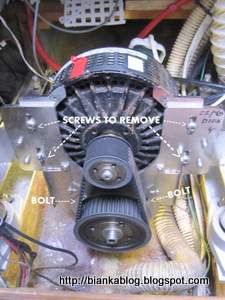"RUST NEVER SLEEPS"
When I bought BIANKA in 1995 it had one hundred feet of chain of 3/8" connected to 140 feet of pliant braid on board and a 33 lb Bruce anchor. It has worked well over the years for me in all kinds of conditions. Including a brush with a catagory one
hurricane Earl in eastern Long Island. I notice it starting to rust over the years but, the rust got knocked off with the first time I anchored each season. At least that part that entered the water. I rarely had to put out more than 75 feet of chain when anchoring. Which meant the remainder of the chain sat in the damp chain locker rusting away. I had a "yikes"moment last year when I saw some of this severely rusted chain go over the anchor roller. I thought it is about time I got some new anchor chain as after twenty six years BIANKA's original anchor chain really did not owe me anything.
I had a hard time trying to figure out what size chain to order. I was pretty sure it was 3/8" chain but, the chain was so rusted I had a hard time figuring out what size it really was by measuring it as this photo comparing the new chain to the old shows:
These two chains were originally the same size but, rust has severely reduced the size of the original chain on the bottom. Just to be sure I would buy the correct chain I ordered a one foot sample of 3/8" anchor chain for ten dollars. I don't want to make a mistake in ordering almost a thousand dollars worth of chain weighing several hundred pounds as the shipping is expensive. I originally thought I had 125 feet of chain on board but, it really was only 100 feet. But, I ordered 200 feet of new chain so I would be able to put out more scope when anchoring in the future with the chain. I ended up with a half barrel (200 feet) of chain being delivered. I bought it from
1st Chain Supply which had a pretty good price including delivery for 3/8" ACCO BBB galvanized chain.
Now it was time to remove the old chain. Since the boat was still in the boatyard I removed the Bruce anchor and used the windlass to drop the chain to the ground:
and onto a piece of scrap shrink wrap to make sure I would not be picking up a lot of dirt when I picked the chain up:
Once the chain was off the boat I then removed the pliant braided anchor line from the chain locker. What remained inside the chain locker was about 5 pounds of rusted anchor chain:
I vacuumed the rust up and cleaned out the anchor locker. I then took the rust covered pliant line that had been sitting under the chain for the past sixteen years to a laundromat put it into a machine with some
Woolite  :
:
After it was washed I bought it back to the boat and using my
Forespar Nova Lift and hoisted the line up in a large duffle bag:
I then laid the line out over the deck for two or three days to dry out before putting it back into the chain locker and attaching the new chain to it. After I attached the chain to the line I marked the chain with a bunch of red cable ties to let me know when deploying the chain that I am reaching the end of the chain. I marked it about 15 feet from the end:
I will eventually mark the chain with both paint and cable ties at various points along the chain 25, 50, 75, 100 etc... so I will know how much has been let out. But, for now cable ties will do. I was a little concerned that perhaps 200 feet of chain might make the boat a little bow heavy but, happily that is not the case. The best thing is I can now sleep better at anchor knowing that BIANKA rides on some brand new anchor chain.






-1.JPG)

-1.jpg)




































.jpg)


